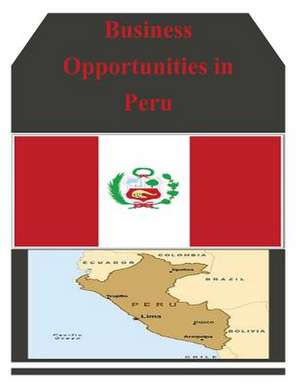Business Opportunities in Peru
Autor U S Dept of Commerceen Limba Engleză Paperback
Preț: 107.15 lei
Nou
Puncte Express: 161
Preț estimativ în valută:
20.51€ • 22.29$ • 17.24£
20.51€ • 22.29$ • 17.24£
Carte disponibilă
Livrare economică 31 martie-14 aprilie
Preluare comenzi: 021 569.72.76
Specificații
ISBN-13: 9781502324177
ISBN-10: 1502324172
Pagini: 112
Dimensiuni: 216 x 279 x 6 mm
Greutate: 0.28 kg
Editura: CREATESPACE
ISBN-10: 1502324172
Pagini: 112
Dimensiuni: 216 x 279 x 6 mm
Greutate: 0.28 kg
Editura: CREATESPACE
